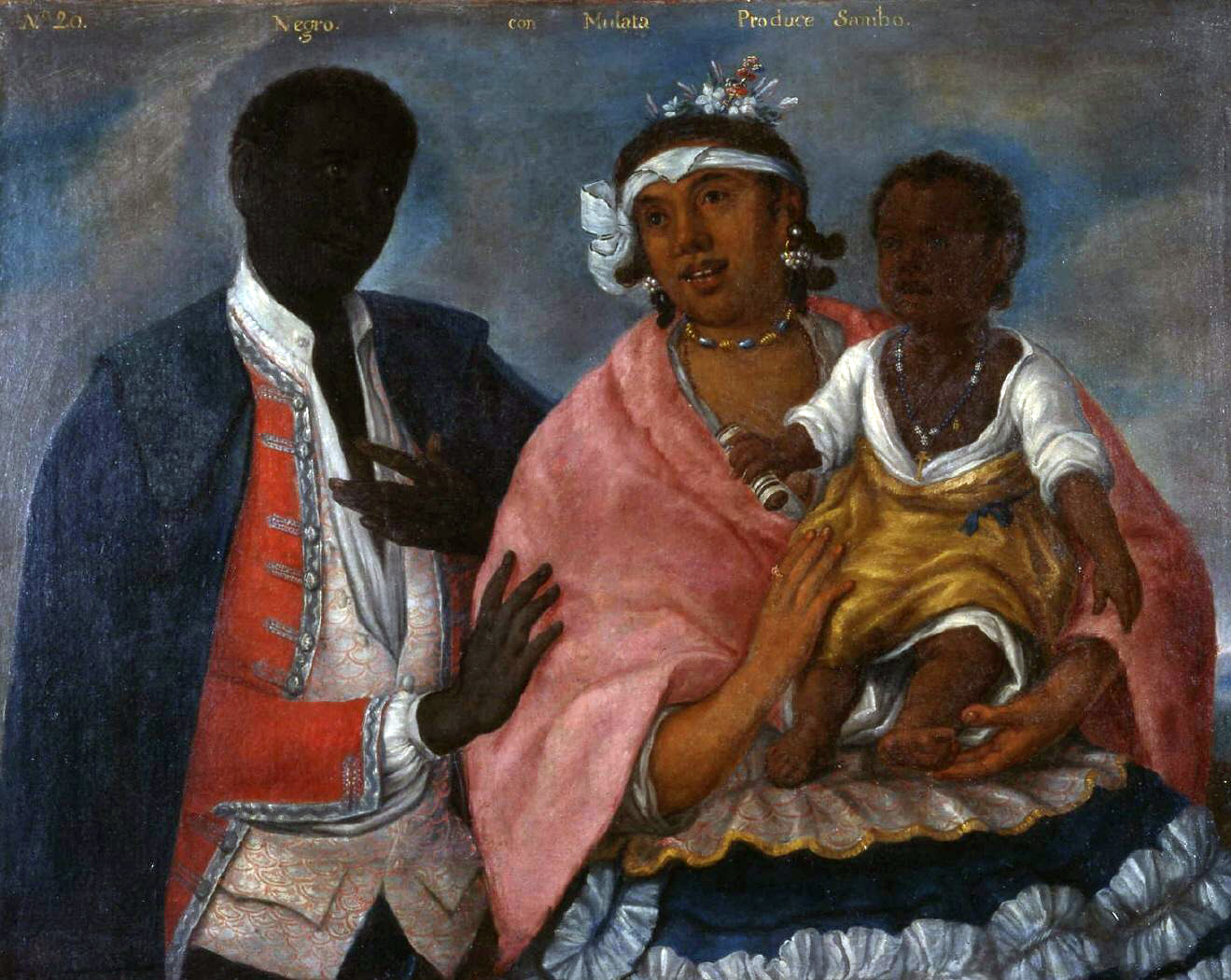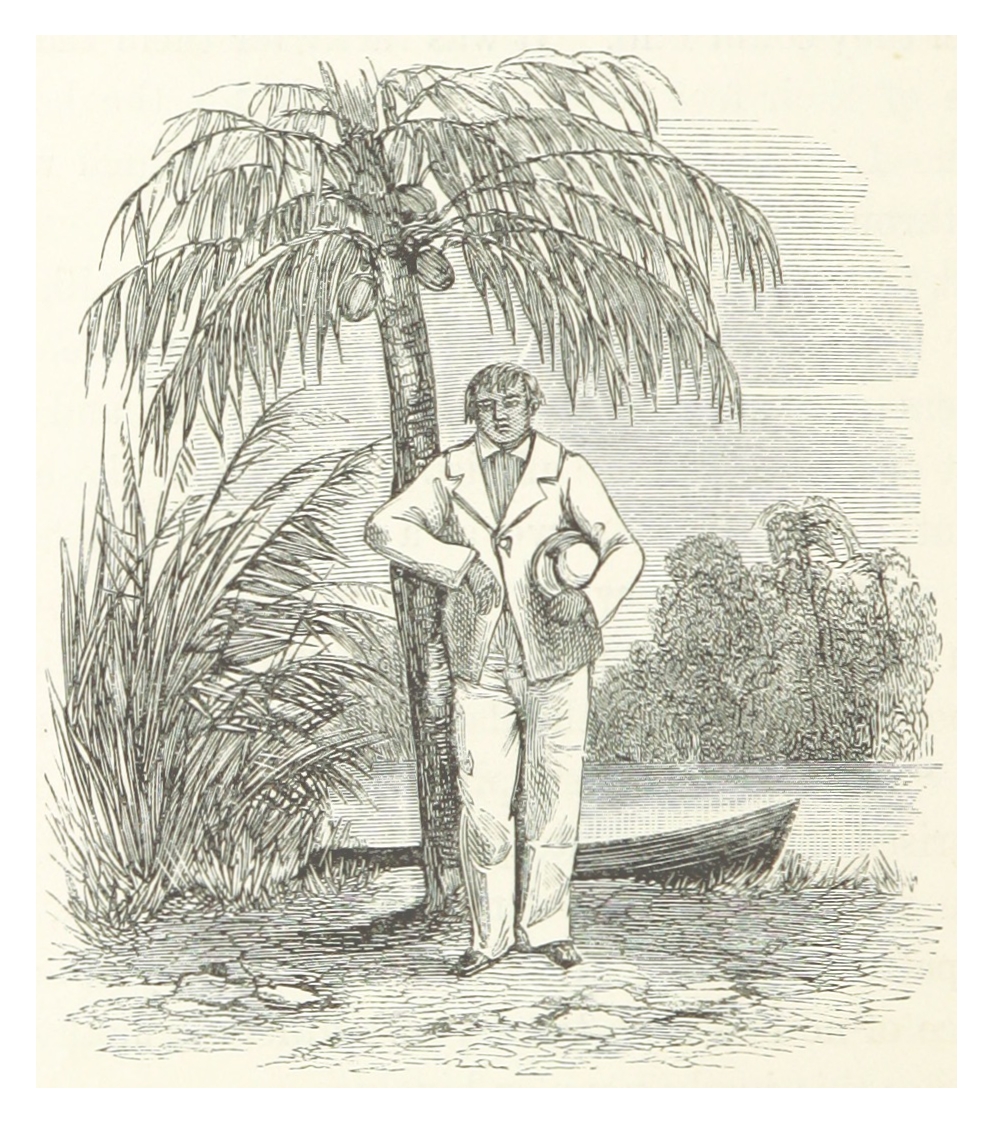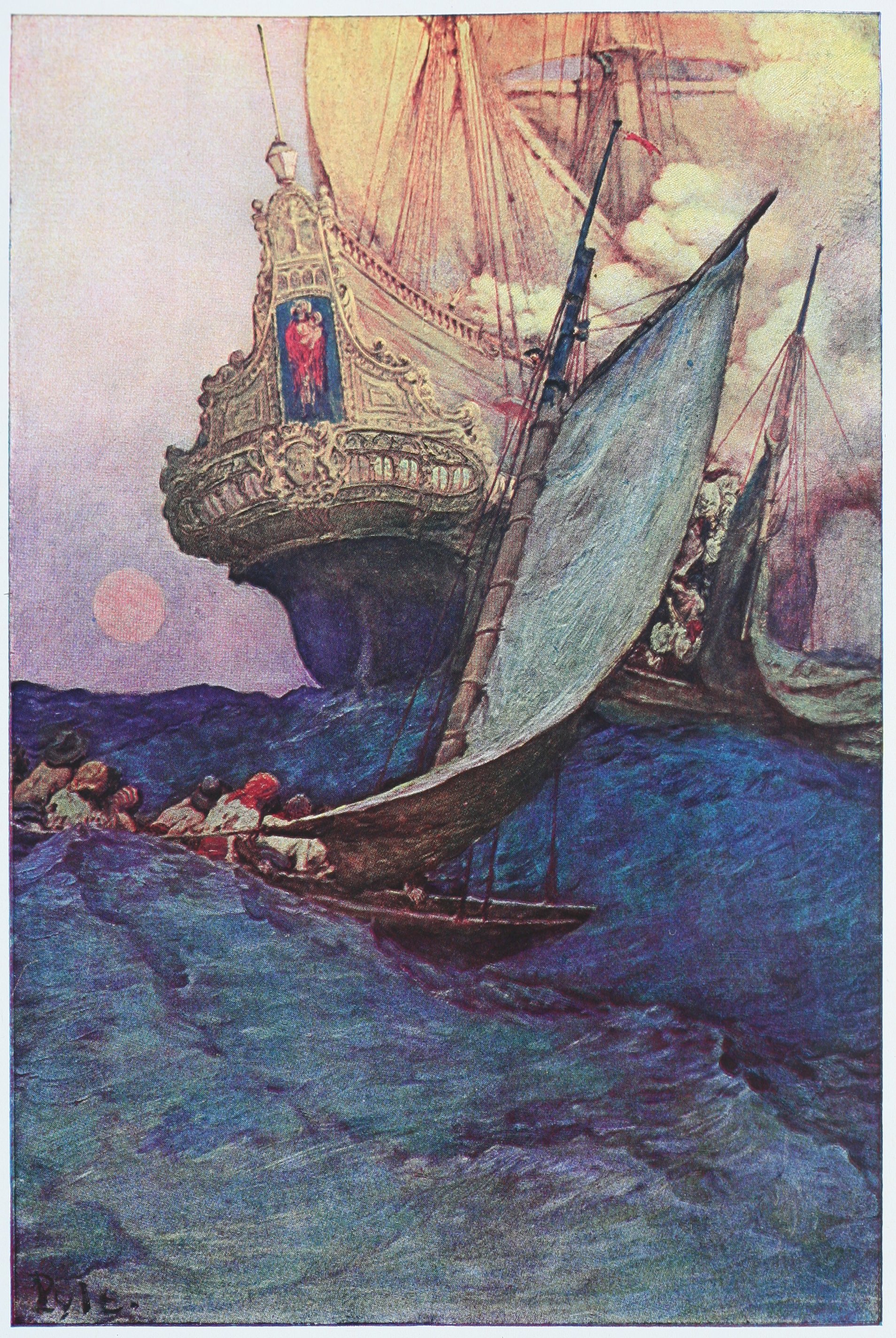|
El Castillo, Nicaragua
El Castillo is a municipality located on the Río San Juan (San Juan River) in the Río San Juan Department of Nicaragua. The settlement of what would eventually become the municipality of El Castillo began in 1673, when construction of the ''Fortaleza de la Limpia Pura e Inmaculada Concepción'', (now known as the Castillo de la Inmaculada Concepción, or Fortress of the Immaculate Conception) was begun. The village of El Castillo eventually grew around the fortress, which continued to be strategically important to the Captaincy General of Guatemala until the late 18th century. The administrative capital of the municipality of El Castillo is the village of Boca de Sábalos, which translates from Spanish to "mouth of the tarpon" ('' Megalops atlanticus''). Boca de Sábalos is located 350 kilometers from the national capital of Managua, 55 kilometers downriver from the departmental capital of San Carlos and several kilometers upriver from the village of El Castillo. History ... [...More Info...] [...Related Items...] OR: [Wikipedia] [Google] [Baidu] |
Río San Juan Department
Río San Juan () is a department in Nicaragua. It was formed in 1957 from parts of Chontales and Zelaya departments. It covers an area of 7,543 km2 and has a population of 137,189 (2021 estimate). The capital is San Carlos. The department also includes the Solentiname Islands archipelago and the San Juan River, after which it is named. Trinidad, in Río San Juan, is the most southerly point in Nicaragua. Municipalities # El Almendro # El Castillo # Morrito # San Carlos # San Juan de Nicaragua San Juan de Nicaragua (formerly known as San Juan del Norte) is a municipality in the Río San Juan Department of Nicaragua. Its capital is Grey Town (formerly also known as ''San Juan del Norte'' or ''Greytown''). History San Juan del Norte wa ... # San Miguelito References Departments of Nicaragua States and territories established in 1957 {{Nicaragua-geo-stub ... [...More Info...] [...Related Items...] OR: [Wikipedia] [Google] [Baidu] |
Costa Rica
Costa Rica, officially the Republic of Costa Rica, is a country in Central America. It borders Nicaragua to the north, the Caribbean Sea to the northeast, Panama to the southeast, and the Pacific Ocean to the southwest, as well as Maritime boundary, maritime border with Ecuador to the south of Cocos Island. It has a population of around five million in a land area of nearly . An estimated people live in the capital and largest city, San José, Costa Rica, San José, with around two million people in the surrounding metropolitan area. The sovereign state is a Presidential system, presidential republic. It has a long-standing and stable Constitution of Costa Rica, constitutional democracy and a highly educated workforce. The country spends roughly 6.9% of its budget (2016) on education, compared to a global average of 4.4%. Its economy, once heavily dependent on agriculture, has diversified to include sectors such as finance, corporate services for foreign companies, pharmaceut ... [...More Info...] [...Related Items...] OR: [Wikipedia] [Google] [Baidu] |
José De Herrera Y Sotomayor
José is a predominantly Spanish and Portuguese form of the given name Joseph. While spelled alike, this name is pronounced very differently in each of the two languages: Spanish ; Portuguese (or ). In French, the name ''José'', pronounced , is an old vernacular form of Joseph, which is also in current usage as a given name. José is also commonly used as part of masculine name composites, such as José Manuel, José Maria or Antonio José, and also in female name composites like Maria José or Marie-José. The feminine written form is ''Josée'' as in French. In Netherlandic Dutch, however, ''José'' is a feminine given name and is pronounced ; it may occur as part of name composites like Marie-José or as a feminine first name in its own right; it can also be short for the name ''Josina'' and even a Dutch hypocorism of the name ''Johanna''. In England, Jose is originally a Romano-Celtic surname, and people with this family name can usually be found in, or traced to, the ... [...More Info...] [...Related Items...] OR: [Wikipedia] [Google] [Baidu] |
Jamaica
Jamaica is an island country in the Caribbean Sea and the West Indies. At , it is the third-largest island—after Cuba and Hispaniola—of the Greater Antilles and the Caribbean. Jamaica lies about south of Cuba, west of Hispaniola (the island containing Haiti and the Dominican Republic), and southeast of the Cayman Islands (a British Overseas Territories, British Overseas Territory). With million people, Jamaica is the third most populous English-speaking world, Anglophone country in the Americas and the fourth most populous country in the Caribbean. Kingston, Jamaica, Kingston is the country's capital and largest city. The indigenous Taíno peoples of the island gradually came under Spanish Empire, Spanish rule after the arrival of Christopher Columbus in 1494. Many of the indigenous people either were killed or died of diseases, after which the Spanish brought large numbers of Africans to Jamaica as slaves. The island remained a possession of Spain, under the name Colo ... [...More Info...] [...Related Items...] OR: [Wikipedia] [Google] [Baidu] |
Battle For The Río San Juan De Nicaragua
A battle is an occurrence of combat in warfare between opposing military units of any number or size. A war usually consists of multiple battles. In general, a battle is a military engagement that is well defined in duration, area, and force commitment. An engagement with only limited commitment between the forces and without decisive results is sometimes called a skirmish. The word "battle" can also be used infrequently to refer to an entire operational campaign, although this usage greatly diverges from its conventional or customary meaning. Generally, the word "battle" is used for such campaigns if referring to a protracted combat encounter in which either one or both of the combatants had the same methods, resources, and strategic objectives throughout the encounter. Some prominent examples of this would be the Battle of the Atlantic, Battle of Britain, and the Battle of France, all in World War II. Wars and military campaigns are guided by military strategy, whereas ba ... [...More Info...] [...Related Items...] OR: [Wikipedia] [Google] [Baidu] |
Siege
A siege () . is a military blockade of a city, or fortress, with the intent of conquering by attrition, or by well-prepared assault. Siege warfare (also called siegecrafts or poliorcetics) is a form of constant, low-intensity conflict characterized by one party holding a strong, static, defensive position. Consequently, an opportunity for negotiation between combatants is common, as proximity and fluctuating advantage can encourage diplomacy. A siege occurs when an attacker encounters a city or fortress that cannot be easily taken by a quick assault, and which refuses to surrender. Sieges involve surrounding the target to block provision of supplies and reinforcement or escape of troops (a tactic known as "investment"). This is typically coupled with attempts to reduce the fortifications by means of siege engines, artillery bombardment, mining (also known as sapping), or the use of deception or treachery to bypass defenses. Failing a military outcome, sieges can often be ... [...More Info...] [...Related Items...] OR: [Wikipedia] [Google] [Baidu] |
Zambo
Zambo ( or ) or Sambu is a racial term historically used in the Spanish Empire to refer to people of mixed Amerindian, Indigenous Amerindian and West African people, African ancestry. Occasionally in the 21st century, the term is used in the Americas to refer to persons who are of mixed West African people, African and Indigenous peoples of the Americas, Native American ancestry. The equivalent term in Brazil is (). However, in Portugal and Portuguese-speaking Africa, ''cafuzo'' is used to refer to someone born of an African person and a person of mixed African and European ancestry. Background The word is believed to have originated from one of the Romance languages or Latin and its direct descendants. The feminine word is (not to be confused with the Argentina, Argentine Zamba (artform), Zamba folk dance.) In some parts of colonial Spanish America, the term applied to the children of one African and one Amerindian parent, or the children of two zambo parents. In New S ... [...More Info...] [...Related Items...] OR: [Wikipedia] [Google] [Baidu] |
Miskito People
The Miskitos are an Afro-Indigenous ethnic group in Central America. Their territory extends from Cabo Camarón, Cape Camarón, Honduras, to Río Grande de Matagalpa, Nicaragua, along the Mosquito Coast, in the Western Caribbean zone. The Miskito people are descendants of shipwrecked and escaped enslaved West/Central Africans and Indigenous Hondurans and Nicaraguans. Majority speak the Miskito language and Miskito Coast Creole. Most also speak other languages, such as Spanish language, Spanish, English language, English, and German language, German. Spanish is the language of education and government, but some families educate their children in English, German, or Miskito. Miskito Coast Creole, an English-based creole language, came about through frequent contact with the British for trading, as they predominated along this coast from the 17th to the 19th centuries. Many Miskitos are Christians. A 1987 peace agreement afforded them land rights over traditional lands. However, des ... [...More Info...] [...Related Items...] OR: [Wikipedia] [Google] [Baidu] |
William Dampier
William Dampier (baptised 5 September 1651; died March 1715) was an English explorer, pirate, privateer, navigator, and naturalist who became the first Englishman to explore parts of what is today Australia, and the first person to circumnavigate the world three times. He has also been described as Australia's first natural historian, as well as one of the most important British explorers of the period between Sir Francis Drake (16th century) and Captain James Cook (18th century); he "bridged those two eras" with a mix of piratical derring-do of the former and scientific inquiry of the latter. His expeditions were among the first to identify and name a number of plants, animals, foods, and cooking techniques for a European audience, being among the first English writers to use words such as avocado, barbecue, and chopsticks. In describing the preparation of avocados, he was the first European to describe the making of guacamole, named the breadfruit plant, and made frequent doc ... [...More Info...] [...Related Items...] OR: [Wikipedia] [Google] [Baidu] |
Buccaneer
Buccaneers were a kind of privateer or free sailors, and pirates particular to the Caribbean Sea during the 17th and 18th centuries. First established on northern Hispaniola as early as 1625, their heyday was from the Restoration in 1660 until about 1688, during a time when governments in the Caribbean area were not strong enough to suppress them. Martinique was a home port for French buccaneers as well as pirates like Captain Crapeau. Originally the name applied to the landless hunters of wild boars and cattle in the largely uninhabited areas of Tortuga and Hispaniola. The meat they caught was smoked over a slow fire in little huts the French called ''boucans'' to make ''viande boucanée'' – ''jerked meat'' or '' jerky'' – which they sold to the corsairs who preyed on the (largely Spanish) shipping and settlements of the Caribbean. Eventually the term was applied to the corsairs and (later) privateers themselves, also known as the Brethren of the Coast. Although c ... [...More Info...] [...Related Items...] OR: [Wikipedia] [Google] [Baidu] |
Lake Nicaragua
Lake Nicaragua or Cocibolca or Granada (, , or ) is a freshwater lake in Nicaragua. Of tectonic origin and with an area of , it is the largest fresh water lake in Central America, the List of lakes by area, 19th largest lake in the world (by area) and the tenth largest in the Americas, slightly smaller than Lake Titicaca. With an elevation of above sea level, the lake reaches a depth of . The intermittent Tipitapa River feeds Lake Nicaragua when Lake Managua has high water. Lake Cocibolca is between two other bodies of water, on top is Lake Xolotlán and below is the San Juan River. These body of waters complete the largest Drainage basin, International Drainage Basin in Central America. The lake drains via the San Juan River (Nicaragua), San Juan River flowing east to the Caribbean Sea, historically making the city Granada, Nicaragua, Granada on the northwest shore an Atlantic port, although Granada (as well as the entire lake) is closer to the Pacific Ocean geographically. The ... [...More Info...] [...Related Items...] OR: [Wikipedia] [Google] [Baidu] |
Caribbean Sea
The Caribbean Sea is a sea of the Atlantic Ocean, North Atlantic Ocean in the tropics of the Western Hemisphere, located south of the Gulf of Mexico and southwest of the Sargasso Sea. It is bounded by the Greater Antilles to the north from Cuba to Puerto Rico, the Lesser Antilles to the east from the Virgin Islands to Trinidad and Tobago, South America to the south from the Venezuela, Venezuelan coastline to the Colombia, Colombian coastline, and Central America and the Yucatán Peninsula to the west from Panama to Mexico. The Geopolitics, geopolitical region around the Caribbean Sea, including the numerous islands of the West Indies and adjacent coastal areas in the mainland of the Americas, is known as the Caribbean. The Caribbean Sea is one of the largest seas on Earth and has an area of about . The sea's deepest point is the Cayman Trough, between the Cayman Islands and Jamaica, at below sea level. The Caribbean coastline has many gulfs and bays: the Gulf of Gonâve, the Gul ... [...More Info...] [...Related Items...] OR: [Wikipedia] [Google] [Baidu] |







